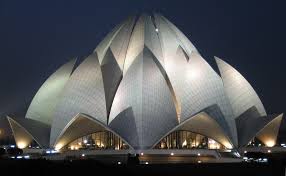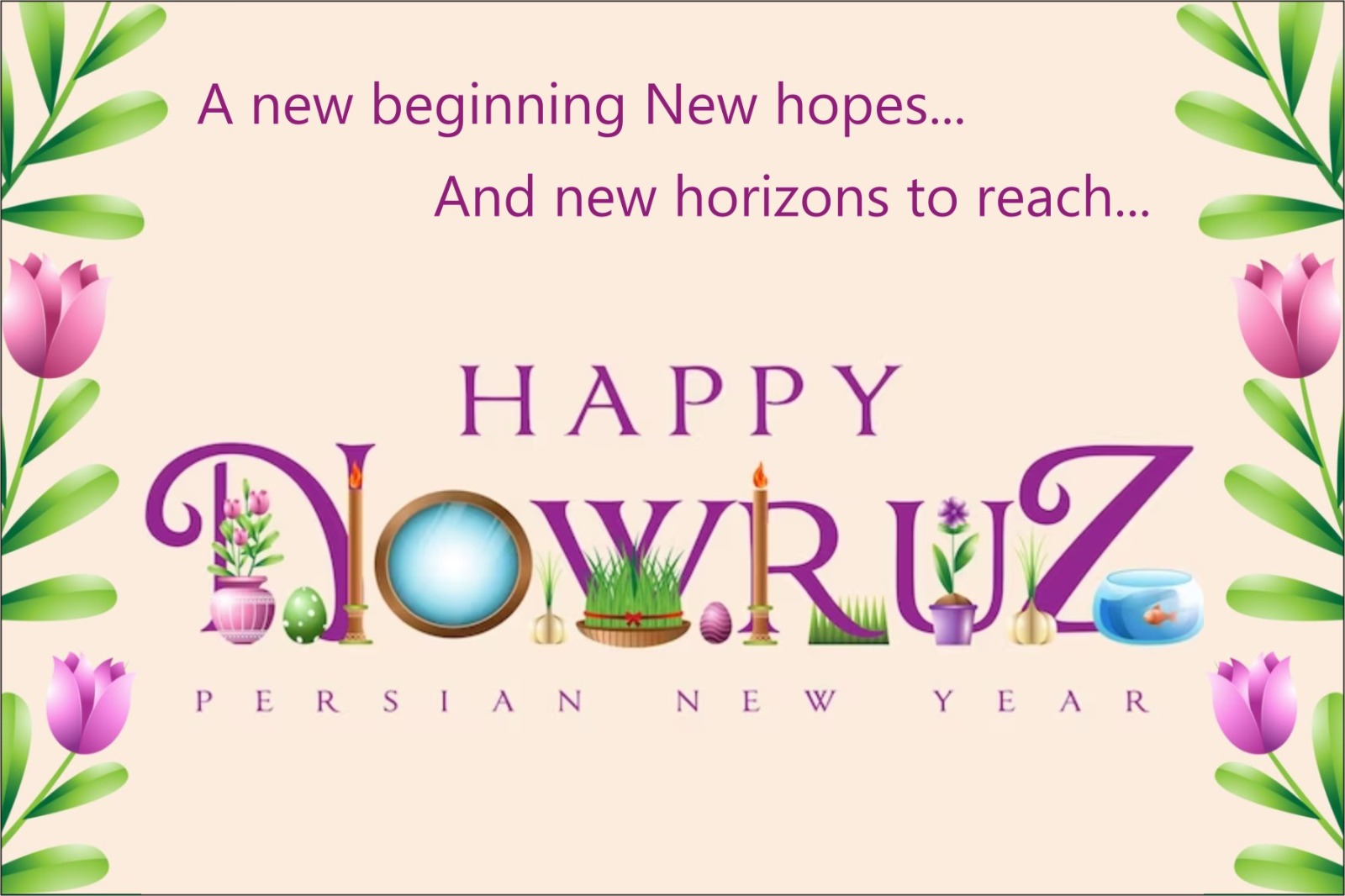Baháʼí Naw-Rúz (Baha’i New Year) is celebrated throughout the world by all the Baháʼí Communities on the first day of the Baháʼí calendar.
This year, Naw-Rúz takes place on March 20. The day usually falls in the final weeks of March and is observed with immense joy, optimism, and faith around the world.
Let the spirit of renewal and unity soar high on March 20 with the celebration of Naw-Rúz, the Baha’i New Year! Rooted in the 19th-century teachings of Bahá’u’lláh, the Prophet-Founder of the Baha’i Faith, Naw-Rúz marks the completion of a 19-day period of fasting and prayer, bringing together Baháʼí around the world in a celebration of unity and promise of a fresh start. It coincides with the spring equinox, symbolizing rebirth and renewal – the perfect time to let go of past mistakes and set audacious goals for the future.
The Baha’i New Year coincides with the March equinox (March 21). The Baha’i Era commenced with the year of the Bab’s declaration (1844 A.D.). Each Baha’i community holds a Nineteen Day Feast on the first day of each Baha’i month. The Feast has spiritual, administrative and social functions and is the principal gathering of Baha’is of a particular locality. Because the Baha’i day lasts from sunset to sunset, the Nineteen Day Feast is generally held in the evening on the day before the first day of the Baha’i month according to the Gregorian calendar.
During this time, Baha’is between 15 and 70 years of age do not eat or drink for 19 days from sunrise to sunset and set aside time for prayer and meditation. Exemptions from the Fast occur for illness, pregnancy, nursing mothers, extended travel and arduous physical labor.

The adoption of a new calendar in each dispensation is a symbol of the power of Divine Revelation to reshape human perception of material, social, and spiritual reality. Through it, sacred moments are distinguished, humanity’s place in time and space reimagined, and the rhythm of life recast. Next Naw-Rúz will mark yet another historic step in the manifestation of the unity of the people of Bahá and the unfoldment of Bahá’u’lláh’s World Order.
The Baha’i year consists of 19 months of 19 days each (361 days), with the addition of “Intercalary Days” (four in ordinary and five in leap years) between the eighteenth and nineteenth months to adjust the calendar to the solar year. The months are named after the attributes of God.
The Bahá’í leap year occurs when five extra days, instead of four, are added between the last two months of the calendar. This usually happens every four years.

The first month, and the first day of each month, are both named Bahá, an Arabic word meaning splendour or glory. Thus Naw-Rúz, the first day of the year, is the day of Bahá in the month of Bahá. The day was called the Day of God by the Báb, and was associated with He whom God shall make manifest, a messianic figure in the Báb’s writings.
Baháʼu’lláh, the Prophet-Founder of the Baháʼí Faith who is recognized as the Messianic Figure expected by the Báb, adopted the new calendar and the use of Naw-Rúz as a holy day.
The day follows the Baháʼí month of fasting, and he explained that Naw-Rúz was associated with the Most Great Name of God,
and was instituted as a festival for those who observed the fast.
The symbolic notion of the renewal of time in each religious dispensation was made explicit by the writings of the Báb and Baháʼu’lláh and the calendar and the new year made this spiritual metaphor more concrete. ʻAbdu’l-Bahá, Baháʼu’lláh’s son and successor, explained that significance of Naw-Rúz in terms of spring and the new life it brings. He explained that the equinox is a symbol of the Manifestations of God, who include Jesus, Muhammad, the Báb and Baháʼu’lláh among others, and the message that they proclaim is like a spiritual springtime, and that Naw-Rúz is used to commemorate it.

Baháʼu’lláh, in the Kitáb-i-Aqdas, defines Naw-Rúz as the day on which the vernal equinox occurs. The exact timing of Naw-Rúz for Baháʼís worldwide depends on the choice of a particular spot on the Earth and was left to the Universal House of Justice, the governing body of the Baháʼís, to decide.
In 2014, the Universal House of Justice chose Tehran as the particular spot. Since Baháʼí days start at sundown, if the equinox occurs just before sunset, the day which started on the previous sunset is Naw-Rúz. Thus Naw-Rúz could fall on either March 20, 21st or 22nd of the Gregorian calendar. These dates are pre-calculated years in advance. All dates in the Baháʼí calendar are set in relation to Naw-Rúz and thus may shift on the Gregorian calendar by a day or two depending on the timing of the vernal equinox.
Naw-Rúz is one of nine Baháʼí holy days where work and school must be suspended; the only one that is not associated with an event in the lives of either the Báb or Baháʼu’lláh. Totally, there are eleven (11) Baha’i Holy days including Day of the Covenant and the Ascension of ‘Abdu’l-Bahá.
Naw-Rúz is usually a festive event observed with meetings for prayer and music and dancing. Since the new year also ends the Baháʼí month of fasting the celebration is often combined with a dinner. As with all Baháʼí holy days, there are few fixed rules for observing Naw-Rúz, and Baháʼís all over the world celebrate it as a festive day, according to local custom.
In a message regarding the universal implementation of the Badí‘ calendar (Bahá’í calendar), the Universal House of Justice states:
“The adoption of a new calendar in each dispensation is a symbol of the power of Divine Revelation to reshape human perception of material, social, and spiritual reality. Through it, sacred moments are distinguished, humanity’s place in time and space reimagined, and the rhythm of life recast.”
The Universal House of Justice says in its letter, addressed the Baha’is of the world, dated July 14, 2014.
“The setting of the sun on 20 March 2015 will signalize the end of the year 171, the close of the ninth Vahid of the first Kull-i-Shay of the Baha’i Era. We call upon the Baha’is of the East and West to adopt, on that auspicious occasion, the provisions that will unite them in the common implementation of the Badi calendar…..“The Festival of Naw-Ruz falleth on the day that the sun entereth the sign of Aries,” Baha’u’llah explains in His Most Holy Book, “even should this occur no more than one minute before sunset.”
As the Bahá’í Era (designated B.E.) was inaugurated by the Twin Manifestations of God (Twin Founders), the Bahá’í Holy Days include events related to the birth, declaration, and passing of both Bahá’u’lláh and the Báb.
In 2024, a leap year, it lasted from February 26 to February 29.
Ayyám-i-Há usually occurs between February 25 and March 1 in the Gregorian calendar, bu this year i.e. in 2024, the four days (1–4) of Ayyám-i-Há occurred between February 26–29.
The days of Ayyám-i-Há have special significance in the Bahá’í faith. It is a festival that encourages members of the faith to celebrate God and devote themselves to charity and giving. The end of the period marks the beginning of the Nineteen Day Fast, which ends on Naw-Rúz) the first day of the Bahá’í New Year.
The month of fasting March 1 – 19 (1–19 ‘Alá’) begins when
Ayyám-i-Há ends.
The month of fasting, during which Bahá’ís from the age of 15 abstain from food and drink between sunrise and sunset. There are exemptions, including for those who are ill, elderly, traveling, pregnant or breastfeeding.
Before 2015, the calendar was locked with the Gregorian calendar, so that the first day of the year was always on March 21. New rules took effect on March 20, 2015, which uncoupled the two calendars. Now, the first day of the Bahá’í year falls on the day of the March Equinox.
This period of Ayyám-i-Há (Intercalary Days) adjusts the Bahá’í year to the solar calendar. It leads to a time of fasting; each day of Ayyám-i-Há is marked by a different virtue like hospitality, gift giving or charity.
Nineteen Day Bahá’í
fast to be observed by adult Bahá’ís in good health from sunrise to sundown. This year all over the world adult Bahá’ís observed fasting from March 1st through 19th March, 2024.
The Bahá’í New Year (Naw-Rúz) is astronomically fixed, coinciding with the vernal equinox. Holy Days are fixed within the solar calendar, except for the observance of the Festival of the Twin Birthdays—the Birth of the Báb and the Birth of Bahá’u’lláh—which moves year to year, taking place on the first and the second day following the occurrence of the eighth new moon after Naw-Rúz.
According to the Bahá’í calendar, a day is the period from sunset to sunset; consequently, the day on which a Nineteen Day Feast, Holy Day, or other significant dates are observed begins at sunset on the eve of each corresponding Gregorian calendar date. For example, if Naw-Rúz falls on 20 March, it is marked from sunset on 19 March to sunset on 20 March.
O Pen of the Most High! Say: O people of the world! We have enjoined upon you fasting during a brief period, and at its close have designated for you Naw-Ruz as a feast. (Baha’u’llah, Kitab-i-Aqdas, p. 24).
(Compiled by Jaya Raju Thota, Greater Visakhapatnam, India)










